Swimming Pools
Marbella Property Trust adds value and luxury to your house with a new design pool.
Your swimming pool will provide you great fun with friends or family.
Marbella Property Trust
Swimming Pools
Specialist in building/ reconditioning swimming pool tiles, current generating machines, built-in massage areas, built-in jacuzzi, heaters, swimming pool covers.
We are focused on satisfying every customer’s needs and expectations.
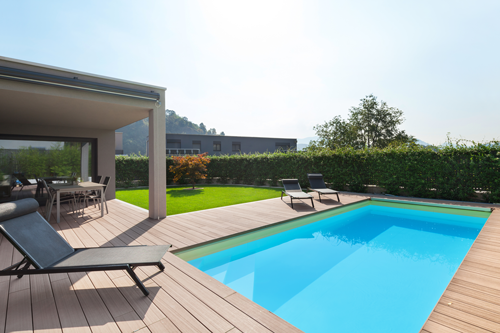
Our swimming pools – come with a variety of sizes and shapes, as well as features and special installations. The pools from this range have corner entry steps, fully-tiled floors, and other packages that will surely make your time in your pool hygienic, safer, and more fun. We can even add installations like lightings, pool covers, and heat pumps, among others for a more pleasant experience.
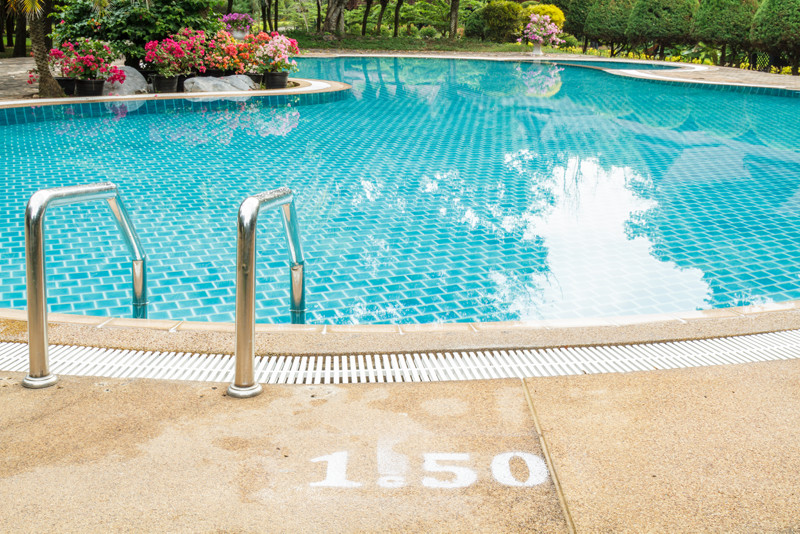
Not only does it allow you to perform the healthy exercise by way of swimming, but it also lets you bask under the warmth of the sun. If you want to install outdoor swimming pools within your property, Marbella Property Trust is ready to help.
Apart from professional training outdoor pools, we also have lounge pools that are fit for households who just want to have fun and enjoy while swimming.
Remodeling your Swimming Pools with us
For a more traditional summer feel, outdoor swimming pools are the perfect hangout spots you can find in any spacious property.
Swimming Pools Remodeling
Renovate your pool to make it the pool of your dreams.
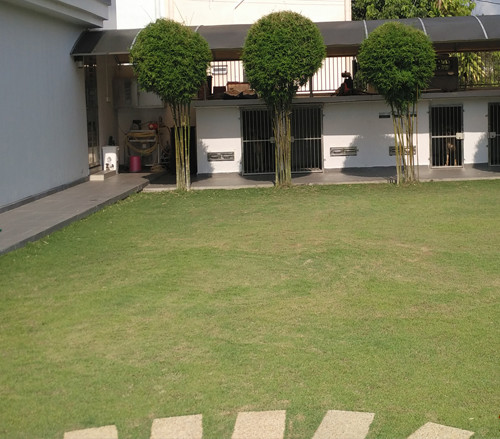
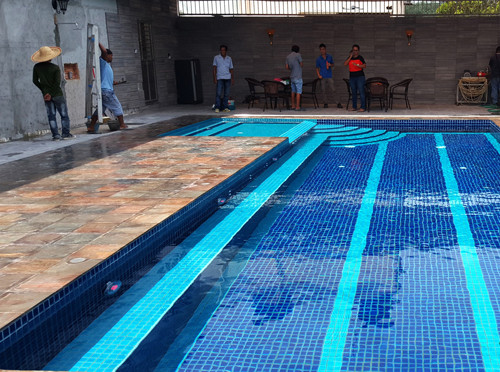
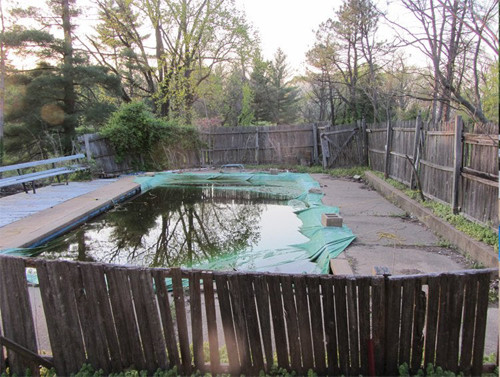
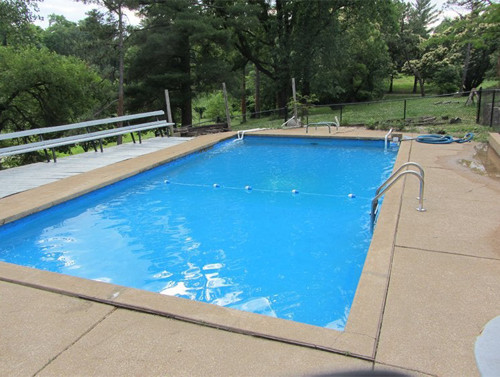
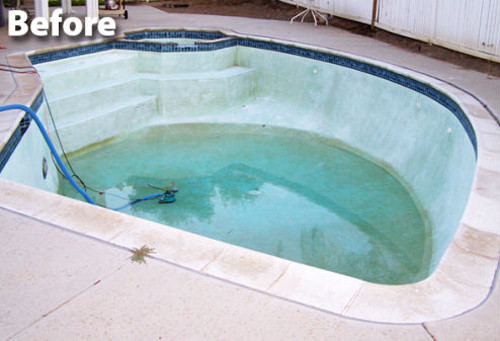
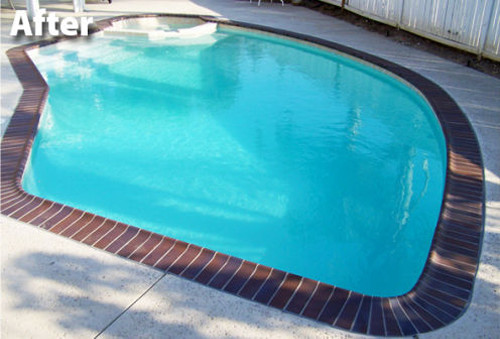
Have a Question?
FAQ
We are here to help you 7 days a week and respond within 24 hours. Plus, you can find most answers to your questions right on this page.
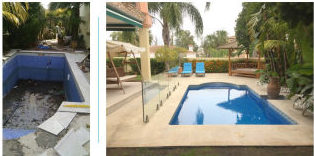
Resurfacing your pool will be necessary if you’re seeing cracks and other defects in the pool’s surface.
The damage typically begins with blistering, which results in chunks of plaster falling off, even revealing the grey gunite shell that underlies the plaster pool surface. The degradation of the pool surface can also result in the formation of a leak.
Signs of a leaking pool include wet spots in the pool area, higher than average water bills, a constantly-running water leveler and excessive water loss. For reference, the average Arizona pool sees a water loss of about one inch per month. To confirm the presence of a leak, you may opt to turn off the pool’s automatic water leveler and mark the water line. Then, watch to see if the level drops.
Neglecting your pool’s chemistry on a long term basis can result in unsightly stains and discolorations that cannot be removed with scrubbing or acid washing. The application of a new pool surface is the only solution.
While some pool owners may consider painting the pool’s surface, the effort and expense typically isn’t worth the return, which averages around a year or so before the paint begins to wear away.
Your pool tiles may need to be replaced or repaired if you observe cracking of the tile, missing or lifting tiles, cracked or missing grout and other defects.
Pool tile problems can arise as a result of many different issues, such as improper mixing of the thinset that was used to apply the tiles, to constant water movement such as tiles in a spillway, where the water flow erodes the grout and ultimately seeps into the area below the tiles, causing them to lift and delaminate.
What’s more, you may also see damage in the area where the tile meets the pool deck. Arizona is prone to some fairly extreme temperature fluctuations which can account for geothermal expansion/contraction of the pool and deck. These forces can damage the tile and grout, making it a mere matter of time before replacement is required.
Painting the pool’s interior is a short term solution that many are tempted to pursue, but this option usually lasts for a matter of months, or perhaps upwards of a year or two before it requires attention. And what’s more, a painted pool will require additional work when it
ultimately comes time to resurface the pool as you’ll need to remove the layers of paint that were applied.
Some may opt for acid washing, and this can provide a brighter, nicer aesthetic look, but the trade-off is that the surface becomes rougher. This is a result of the acid, which quite literally eats away at the outer surface layer, leaving a rougher, more porous layer exposed.
This more porous surface is also more challenging to clean and it’s only a matter of time before the surface becomes dull and not-so-bright.
Resurfacing is the most efficient and long-lasting solution. Resurfacing your pool with new plaster, infused with stones of various sizes and color, can create an entirely new look, while providing our technicians with an opportunity to seal up cracks, leaks and other flaws.
The length of a pool resurfacing and improvement project will vary according to the precise scope of the project and the size of the pool. Each project is unique and we’re happy to discuss this with you while planning your pool renovation.
Generally speaking, a pool that’s resurfaced with PlasterPozz, PebbleScapes or CoolQuartz can be refinished and operational within ten days. This includes the time required to drain the pool, resurface and then re-fill the pool.
Projects that entail a broader scope, such as tile work, extensive repairs, re-plumbing, new fixture installation and other improvements can take longer. Our team will go the extra mile to ensure the project moves forward at a steady pace, without compromising quality.
It’s important to remember that unexpected obstacles or a change in project scope can impact the project timeframe.
Many pool owners opt to resurface the pool during the cooler winter months, when the pool is used less frequently.
The pool renovation process can last a few days or longer, depending upon the size of the pool and the nature of the project. We’ll discuss the anticipated timeframe with you prior to beginning.
Therefore, you may see different workers on-site from day to day, as each worker has a unique specialty or skill set. In some cases, one team may conclude their work mid way through the day, and a new team may arrive to begin work on their portion of the project. In other cases, work may be paused for a period of time to allow materials to cure, set, etc.
Maintaining your new, beautiful pool is essential! This will ensure your newly renovated pool looks incredible for many years to come!
Marbella Property Trust recommends establishing a regular pool maintenance program, which tends to various elements of your pool, including:
pH levels;
chlorine levels;
avid levels;
pool temperature;
pool skimming and cleaning; and
filtration.
Some pool owners are knowledgeable about these various elements of pool care, while others may opt to seek out the assistance of a pool service. Whatever the case, it’s important to maintain your pool properly in order to maximize the lifespan of your pool surfacing.
